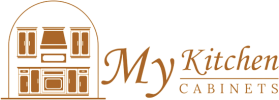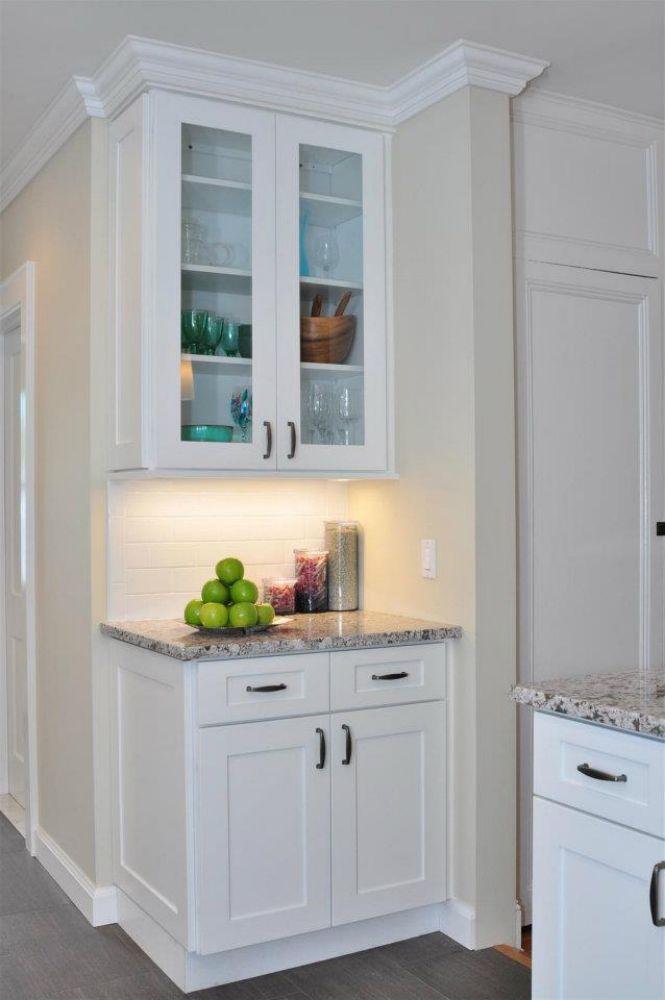Balancing Beauty and Function: How to Choose Kitchen Cabinets That Blend with Open Shelving
Designing a modern kitchen often involves striking the right balance between functionality and style. One design trend that continues to gain popularity is the combination of closed cabinetry and open shelving. This approach offers the best of both worlds — the organized efficiency of kitchen cabinets and the visual openness of shelves that showcase personality and design flair.
At kitchen cabinets by My Kitchen Cabinets, we understand that blending traditional cabinetry with open shelving requires careful planning. The goal is to create a cohesive and harmonious kitchen design where storage and aesthetics coexist seamlessly. Whether you’re going for a modern minimalist look or a cozy farmhouse feel, learning how to coordinate cabinetry with open shelves can transform your kitchen into an inviting and highly functional space.
Why Combine Kitchen Cabinets with Open Shelving?
Combining kitchen cabinets with open shelving has become a hallmark of contemporary design because it adds dimension, flexibility, and personality to the kitchen. While cabinets provide essential concealed storage for cookware, utensils, and pantry items, open shelves offer space to display decorative pieces, glassware, or daily essentials for easy access.
1. Function Meets Aesthetics
This blend provides the practicality of ample storage without sacrificing design creativity. The closed cabinets handle clutter, while the open shelves create visual interest and a lighter, airier atmosphere.
2. Enhanced Customization
Mixing both elements allows homeowners to tailor their kitchens to their lifestyle—whether that means more display space, additional functional storage, or a balance of both.
3. Visual Balance and Depth
When designed thoughtfully, the combination of cabinets and shelving creates contrast and texture, preventing your kitchen from feeling too “boxed in” or overly open.
The Key Principles of Designing with Cabinets and Shelves
To successfully integrate open shelving with kitchen cabinets, there are several design principles to consider. These will help ensure balance, proportion, and harmony throughout your space.
1. Consistency in Material and Finish
Choose cabinetry and shelving materials that complement each other. For example:
-
Pair wood shelves with painted cabinets for a warm, organic contrast.
-
Match shelf tones to cabinet hardware for subtle cohesion.
-
Coordinate finishes—if your cabinets are matte, consider matte-finished shelving brackets or wood textures.
Maintaining consistency across finishes ensures a unified aesthetic, even when mixing styles.
2. Visual Symmetry
Balance is key when incorporating open shelving. Place shelves strategically around cabinets to maintain symmetry—such as on either side of a range hood or window. Uneven distribution can make the space feel cluttered or unbalanced.
3. Functional Placement
Keep shelves in easy-to-reach areas for frequently used items like dishes or glasses, while cabinets should store less frequently accessed essentials. This creates a natural workflow while keeping your countertops clear.
Choosing the Right Kitchen Cabinets for Open-Shelf Pairing
Your choice of cabinetry will determine how well your kitchen accommodates open shelving. When pairing the two, consider how design, layout, and color work together to form a cohesive space.
1. Cabinet Style
Certain cabinet door styles work better with open shelving than others:
-
Shaker Cabinets: Their clean lines complement minimalist shelves beautifully, offering timeless versatility.
-
Slab or Flat-Panel Cabinets: Perfect for modern or Scandinavian-inspired designs where simplicity is key.
-
Glass-Front Cabinets: Bridge the gap between open and closed storage, providing visibility while maintaining structure.
2. Cabinet Placement
Position upper cabinets strategically. For instance:
-
Use cabinets on one side of the kitchen and shelves on the other to balance open and closed space.
-
Combine open shelving above and closed cabinets below for a grounded, functional design.
3. Matching Proportions
The scale of your shelves should complement the size and proportions of your cabinetry. Oversized shelves can overwhelm smaller cabinets, while tiny ones may get lost against large units.
Selecting Materials and Finishes That Complement Each Other
When blending open shelving with cabinets, choosing harmonious materials and finishes is essential.
1. Wood Pairings
Wood introduces warmth and texture, making it a perfect complement to painted cabinets. Consider:
-
Natural oak or walnut shelves paired with white or gray cabinets for contrast.
-
Dark-stained wood shelves with light-toned cabinets for dramatic visual appeal.
2. Painted Finishes
For a modern look, match your shelves and cabinets in the same color tone but vary the texture — for instance, matte shelves with satin-finished cabinets.
3. Metal or Industrial Touches
If you prefer an industrial aesthetic, integrate metal brackets, steel shelving, or hardware that matches cabinet pulls. This adds depth and cohesion.
Color Coordination Strategies
Color harmony is critical to blending open shelving with cabinetry seamlessly.
1. Tone-on-Tone Harmony
Choose shades from the same color family for both cabinets and shelves. This monochromatic approach creates a sophisticated, unified look.
2. Contrasting Accents
For a bold statement, contrast cabinet and shelf colors—such as pairing navy cabinets with natural wood or black shelves with white cabinetry. The contrast draws the eye and highlights architectural details.
3. Neutral Foundations with Accents
Keep the cabinetry neutral (white, beige, or gray) and use the shelves to add warmth or personality through natural wood tones or painted accents.
4. Consider Lighting Effects
Remember that color appearance changes with lighting. Test samples under both natural and artificial light to ensure the combination remains visually cohesive at all times.
Layout Ideas for Mixing Kitchen Cabinets and Open Shelves
1. Framing a Focal Point
Use open shelves to frame focal elements like a range hood, window, or backsplash. Closed cabinets can then flank these shelves for balance and structure.
2. Corner Shelving
Replace awkward corner cabinets with floating shelves to open up the space and make it more accessible.
3. Transitional Layouts
Install a run of upper cabinets ending with a few open shelves near a window or dining area. This transition helps lighten the visual weight of cabinetry.
4. Island or Peninsula Shelving
Add small open shelves at the end of an island to display cookbooks, décor, or dishware while keeping your workspace clear.
5. Integrated Niches
Combine recessed shelving within cabinetry runs — for instance, built-in niches for spice racks or coffee stations that break up long stretches of closed doors.
Blending Kitchen Cabinets and Open Shelves by Style
1. Modern Kitchens
Opt for flat-panel cabinets with floating shelves in the same finish or a contrasting wood tone. Keep hardware minimal or integrated for a sleek appearance.
2. Farmhouse Kitchens
Combine shaker-style cabinets with reclaimed wood or rustic shelves. Add black or bronze hardware for warmth and character.
3. Transitional Kitchens
Mix contemporary and classic elements—such as painted cabinets paired with stained wood shelves and clean-lined decorative details.
4. Industrial Kitchens
Use matte black cabinets with metal-framed shelves and exposed brackets for an urban loft feel.
5. Scandinavian Kitchens
Pair white or light wood cabinets with floating shelves in natural tones, emphasizing light, airiness, and simplicity.
Each design approach should maintain balance and continuity between cabinetry and shelving elements.
Hardware and Accessories for a Cohesive Look
Small details like hardware can make or break the overall aesthetic.
1. Matching Metal Finishes
Choose consistent metal finishes across cabinet handles, shelf brackets, and lighting fixtures to unify the look.
2. Integrated Lighting
Under-shelf or under-cabinet lighting enhances both function and ambiance. LED strip lights highlight displays while improving workspace visibility.
3. Decorative Elements
Coordinate decorative items on your shelves—such as ceramics, glass jars, or greenery—with your cabinet finishes to tie the look together.
Maximizing Function Without Losing Style
The beauty of mixing open shelves with closed cabinetry lies in functionality. To keep your space practical:
-
Store essentials (plates, cups, spices) on lower shelves for easy access.
-
Reserve decorative pieces for upper shelves.
-
Use baskets or jars for organization to prevent visual clutter.
-
Ensure uniform spacing between shelves for proportional balance.
By combining organization and aesthetics, you’ll maintain a clean and efficient kitchen that looks effortlessly curated.
Common Mistakes to Avoid When Pairing Cabinets with Shelves
Even the most stylish kitchens can feel disjointed if key design principles are overlooked.
1. Overcrowding Open Shelves
Too many items can make shelves look cluttered. Keep displays minimal and cohesive—group items by color, shape, or purpose.
2. Ignoring Balance
Avoid placing all shelves on one side of the room. Distribute open elements evenly to maintain symmetry.
3. Mixing Too Many Materials
While contrast is appealing, combining too many finishes (metal, multiple woods, bold colors) can overwhelm the space. Stick to two or three complementary tones.
4. Forgetting Maintenance Needs
Open shelves collect dust and grease faster than cabinets. Choose materials that are easy to clean and maintain.
Why Lighting Matters When Combining Cabinets and Shelving
Lighting dramatically affects how your kitchen cabinets and shelves appear. The right lighting can enhance materials, create warmth, and emphasize focal points.
1. Task Lighting
Install LED strips beneath cabinets and shelves to illuminate countertops and workspace areas.
2. Accent Lighting
Highlight decorative displays or shelving niches with small puck lights or integrated LED panels.
3. Ambient Lighting
Pair overhead fixtures with cabinet lighting to achieve even illumination throughout the kitchen.
Proper lighting ensures that both closed cabinetry and open shelving shine equally in your design.
Tips for Maintaining a Cohesive Kitchen Design
-
Stick to a unified color palette—limit yourself to two or three main tones.
-
Keep shelving functional but curated—avoid overcrowding.
-
Use repeating materials—such as matching wood tones or hardware finishes.
-
Integrate consistent shapes—for instance, pairing rectangular cabinet doors with linear shelves.
-
Balance proportion and scale—large cabinets can overpower small shelves if not aligned properly.
A well-balanced design feels intentional, not improvised.
Conclusion: Crafting the Perfect Balance Between Cabinets and Open Shelving
Blending open shelving with kitchen cabinets offers the perfect combination of practicality and style. Cabinets provide essential concealed storage, while open shelves bring lightness, personality, and accessibility to the space. The secret lies in balance—choosing complementary materials, maintaining symmetry, and sticking to a cohesive color palette.
At My Kitchen Cabinets, we believe your kitchen should reflect both your lifestyle and aesthetic vision. Whether you prefer sleek modern finishes, rustic charm, or a transitional mix of both, our expert designers can help you create cabinetry and shelving combinations that enhance your kitchen’s functionality and visual harmony.
A kitchen that balances open shelving and cabinets not only looks stunning but also tells your story through thoughtful design. By blending structure with openness, you create a space that feels organized, welcoming, and uniquely yours—where beauty and function meet in perfect equilibrium.
FAQs About Blending Kitchen Cabinets with Open Shelving
1. How do I decide how many open shelves to include in my kitchen?
Start small. One or two open shelves are often enough to achieve balance without overwhelming the space. Assess your storage needs before replacing multiple cabinets with shelving.
2. Should my shelves match my kitchen cabinets exactly?
Not necessarily. Matching creates a seamless look, but contrasting finishes—such as natural wood shelves with painted cabinets—can add character and depth.
3. Are open shelves hard to maintain?
Open shelves do require more frequent cleaning since they’re exposed to dust and grease. Choosing wipeable materials like sealed wood or metal and keeping displays minimal makes upkeep easier.
4. Can I add open shelves to an existing kitchen?
Absolutely. Replacing a few upper cabinets with shelves is an easy way to refresh your kitchen without a full remodel. Just ensure your new shelves complement the existing cabinetry in tone and proportion.
5. What’s the best material for open shelves in kitchens?
Durable, moisture-resistant materials like solid wood, plywood, metal, or tempered glass are best. Pair them with sturdy brackets or hidden supports to ensure longevity and stability.
Read: What design trends for 2025 are shaping kitchen cabinets?
Read: What’s the average return on investment for upgrading kitchen cabinets?

